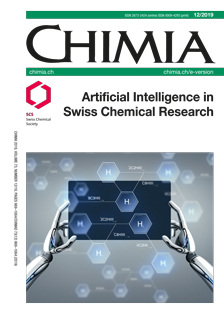Exploring Chemical Space with Machine Learning
DOI:
https://doi.org/10.2533/chimia.2019.1018PMID:
31883554Keywords:
Chemical space, Data visualization, Deep learning, Molecular databases, PolypharmacologyAbstract
Chemical space is a concept to organize molecular diversity by postulating that different molecules occupy different regions of a mathematical space where the position of each molecule is defined by its properties. Our aim is to develop methods to explicitly explore chemical space in the area of drug discovery. Here we review our implementations of machine learning in this project, including our use of deep neural networks to enumerate the GDB13 database from a small sample set, to generate analogs of drugs and natural products after training with fragment-size molecules, and to predict the polypharmacology of molecules after training with known bioactive compounds from ChEMBL. We also discuss visualization methods for big data as means to keep track and learn from machine learning results. Computational tools discussed in this review are freely available at http://gdb.unibe.ch and https://github.com/reymond-group.Downloads
Published
2019-12-18
Issue
Section
Scientific Articles
License
Copyright (c) 2019 Swiss Chemical Society

This work is licensed under a Creative Commons Attribution-NonCommercial 4.0 International License.
How to Cite
[1]
Chimia 2019, 73, 1018, DOI: 10.2533/chimia.2019.1018.







